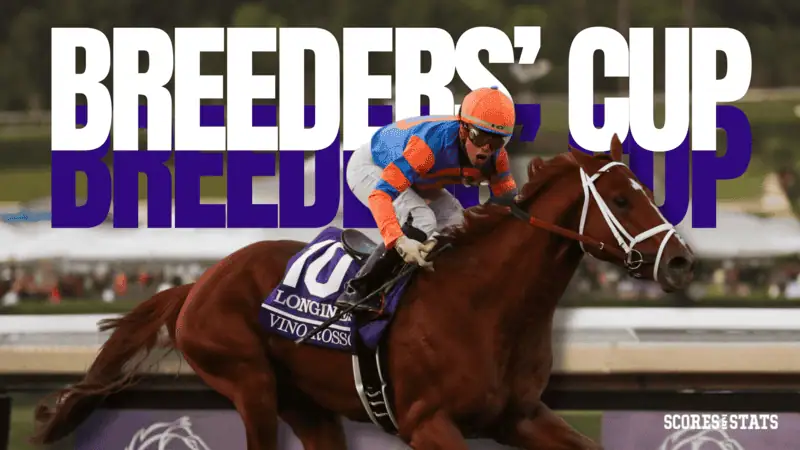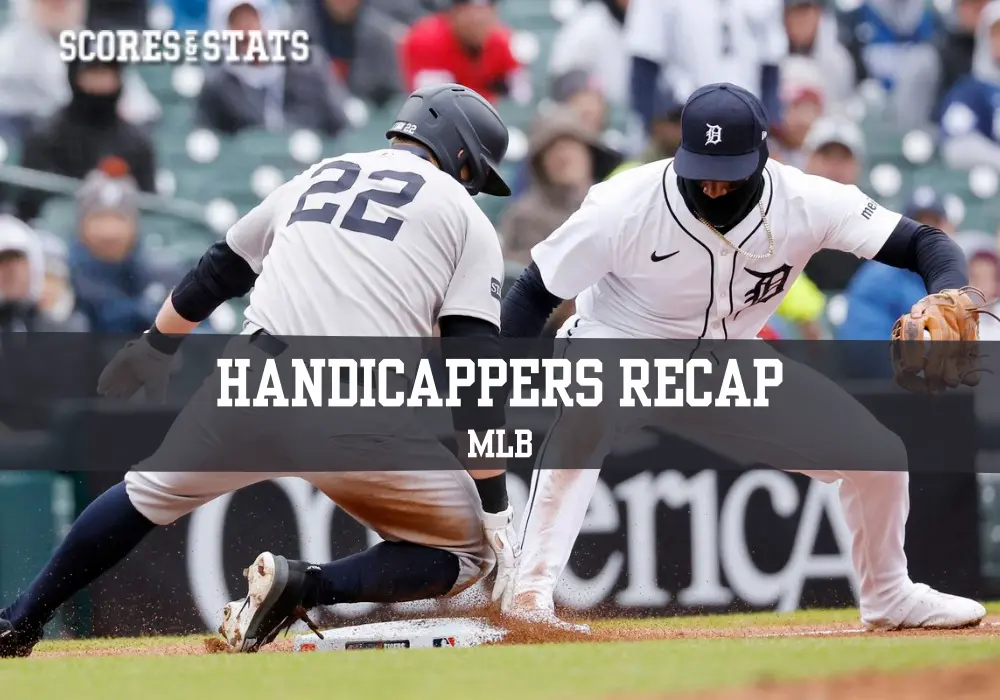Table of Contents
The Breeders’ Cup is one of the most exciting events in horse racing, drawing in the best horses, jockeys, and trainers from around the world. This is also typically one of the most well-attended horse racing events on the annual calendar, even if it may not draw quite as much television buzz as the Triple Crown events.
The 2024 Breeders’ Cup will go down at Del Mar Thoroughbred Club just north of San Diego, California. This will be Del Mar’s third time hosting the event after doing so in both 2017 and 2021.
With a full weekend of high-stakes races and millions of dollars on the line, it’s a thrilling time for bettors looking to cash in on the horse racing action. Whether you’re a seasoned racing fan or just dipping your toes into betting, having a few smart strategies up your sleeve can help you make the most of your bets.
In this post, we’ll share 5 useful tips to help you bet more confidently and, hopefully, walk away a winner during the 2024 Breeders’ Cup.
Do Your Research on Horse Form and Track Conditions
When you’re betting on the Breeders’ Cup, one of the most critical elements to consider is the current form of the horses. A horse’s “form” refers to its recent racing performances, and taking note of such things can provide some helpful insight into how the horse is likely to perform on race day. For example, horses coming off strong finishes in their last few starts—especially at similar distances or in similar race conditions—often carry positive momentum into the Breeders’ Cup. Naturally, these horses make for smart bets to fare well moving forward.
Beyond recent form, you should also pay close attention to track conditions. Different horses excel on different surfaces. Some horses thrive on dirt tracks, while others perform better on turf. Likewise, certain horses prefer firm conditions, while others excel on softer ground. Checking the weather forecast in the days leading up to the event is crucial, as rain can turn a firm turf track into a yielding one, favoring horses that handle wet surfaces well. Fortunately, rain is highly unlikely to be a factor with this year’s Breeders’ Cup taking place in sunny Southern California.
Another potential factor to consider is the distance of the race. Not all horses perform equally well at different distances. A sprinter might dominate a shorter race but falter over longer distances. By studying a horse’s past performances at the Breeders’ Cup distance, you can make a more informed decision on how the race might unfold. The Longines’ Breeders’ Cup Classic this year will be a 1 1/4-mile race on Del Mar’s dirt track.
Focus on Proven Trainers and Jockeys
When it comes to major horse racing events like the Breeders’ Cup, it’s not just the horses that matter—it’s also about the people behind the scenes. Trainers and jockeys play a significant role in determining a horse’s success on race day.
Certain trainers have established themselves as experts in preparing horses for important, high-stakes competitions. Their records at events like the Breeders’ Cup speak volumes. Trainers like Bob Baffert, Aidan O’Brien, and Chad Brown are household names in the industry, as they’ve consistently sent well-prepared horses to Breeders’ Cup events. Betting on a horse from a top-notch trainer can increase your confidence that the horse will be prepared for the challenge.
Equally important are the jockeys. The best riders in the world will descend upon the Breeders’ Cup, and their skills can make all the difference in tight races. A jockey with experience in handling the pressure of big events, especially those with previous Breeders’ Cup wins, is someone who’ll typically do well in this kind of competition. Jockeys like Frankie Dettori and Joel Rosario have consistently ridden with confidence in big-money races. Pay attention to jockey-horse combinations with a history of success, as familiarity between the two can lead to a more effective race strategy.
Fierceness – a name you may remember if you bet on the 2024 Kentucky Derby – is one of the thoroughbreds expected to be in the field for the 2024 Breeders’ Cup. With a proven jockey/trainer combination – John Velazquez and Todd Pletcher – Fierceness checks all the boxes heading into the November 2 event.
Additionally, some jockeys specialize in certain types of races or track surfaces. For instance, a jockey known for winning on turf might have an advantage in a grass race, while a dirt-track specialist will perform better in those races. Analyzing the trainer and jockey’s track records in similar conditions can provide an edge before you place your bets.
Don’t Ignore Long Shots
While betting on the favorite can seem like the safe option, what fun is it to be a frontrunner? Favorites may be more likely to win, but they’re hardly sure things. In many cases, betting on long-shot horses is a strategy that can pay off handsomely if Lady Luck is on your side.
In races like the Breeders’ Cup with world-class horses, don’t overlook the potential of long shots to pull upsets. This is a high level of competition, and upsets are fairly common. The large, diverse fields can result in surprise performances, and often, horses with higher odds provide great value. For example, in recent years, several long shots with odds of 20-1 or more have found their way into the winner’s circle, delivering huge payouts to those who took the risk. In recent years, underdogs like Mystik Dan (2024), Rich Strike (2022), and Country House (2019) have won the Kentucky Derby despite entering the race with long odds. We’ve seen similar results at the Breeders’ Cup.
To identify potential long-shot winners, look for horses who may have underperformed in their recent races but have a history of better performances in similar conditions. Sometimes, a change in jockey, track conditions, or race distance can bring out the best in a horse that the public might have overlooked. Another factor to consider is horses with solid pedigree but inconsistent recent form—sometimes they just need the right setup to deliver an unexpected winning performance.
Betting on long shots can also be more strategic in multi-race wagers like exactas, trifectas, or superfectas. Including a couple of long shots in these types of bets can dramatically increase your potential payout. However, it’s important to balance risk with reward—rather than placing all your money on long shots, consider mixing them with more consistent performers to hedge your bets.
Utilize Multi-Race Wagers (Exactas, Trifectas, Superfectas)
As mentioned, one way to maximize your Breeders’ Cup betting returns is by participating in multi-race wagers. Instead of just picking a winner for a single race, multi-race bets like exactas, trifectas, and superfectas allow you to predict the top two, three, or even four finishers in a race. Although these bets are harder to win, they offer significantly bigger payouts than traditional win-place-show wagers. That’s what makes them worth considering, especially in competitive races.
The key to placing winning multi-race wagers is to combine horses with both solid winning potential and those that may offer value at longer odds. For example, if you feel confident about the favorite winning, you can include that horse in your exacta. However, then consider adding a horse with longer odds in the second-place spot. Similarly, when placing trifectas and superfectas, try to include a balance of favorites, mid-tier contenders, and long shots. The goal is to find combinations that cover different scenarios but still offer a lucrative payout if you win.
Remember, though, that multi-race wagers require careful bankroll management. Since these bets are harder to win, it’s important not to bet too much of your total bankroll on any single multi-race bet. Instead, focus on placing smaller, strategic bets with a higher upside, ensuring that a win will still cover your losses from other wagers. Never betting more than you’re willing to lose is one of the first rules of thumb to remember when it comes to bankroll management.
Keep an Eye on International Horses
The Breeders’ Cup draws top competitors from across the globe, and international horses often bring a different racing style and form to the event. Horses from Europe and Japan, in particular, have had success in turf races at the Breeders’ Cup. European horses, for example, tend to excel on turf, as they often come from racing environments where turf is the dominant surface, giving them an advantage over American horses that primarily race on dirt.
When looking into international contenders, take a close look at their recent performances in top-level races in their native countries. Races like the Prix de l’Arc de Triomphe in France or the Epsom Derby in the United Kingdom may serve as strong indicators of international horses’ ability to compete at the Breeders’ Cup. Be sure to also consider the travel factor—horses traveling long distances may face challenges with acclimatization, but those with a history of international racing experience may handle the trip better.
Pay special attention to how international horses are being talked about in the lead-up to the event. If they are training well and adjusting to the local conditions, they can offer excellent betting opportunities, often at favorable odds.
That said, American horses have fared overwhelmingly well at previous Breeders’ Cups. In fact, nearly 76% of all winners at Breeders’ Cup events over the years have been American-raised thoroughbreds. The country that has had the 2nd-most winners over the years is Ireland.
Conclusion
The Breeders’ Cup offers a fun opportunity for you to bet on world-class horse racing outside of Triple Crown season. If you take the time to research horse form and track conditions, focus on proven trainers and jockeys, don’t overlook long shots, utilize multi-race wagers, and keep an eye on international contenders, you can increase your chances of making profitable bets.
The key is to approach your betting strategy with patience, balance, and a solid understanding of the event’s nuances. With these tips in hand, you’re now ready to make smarter, more strategic bets at this year’s Breeders’ Cup.













